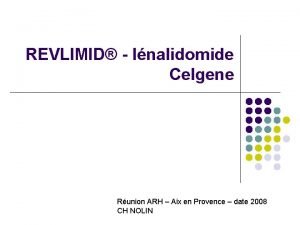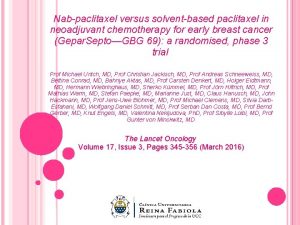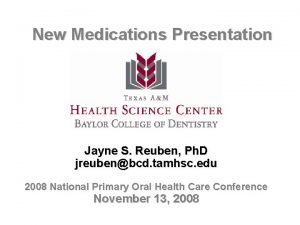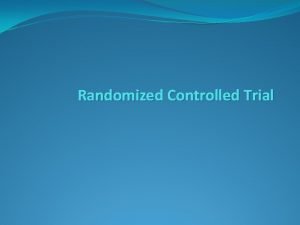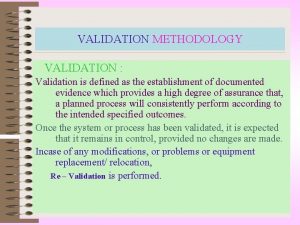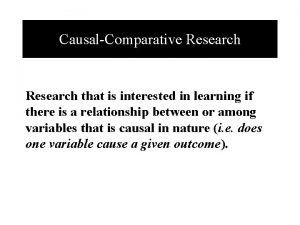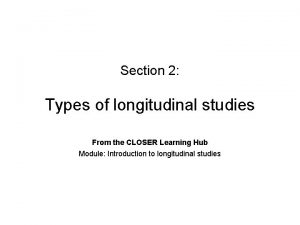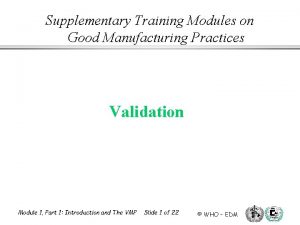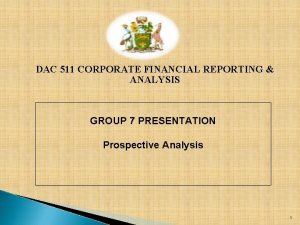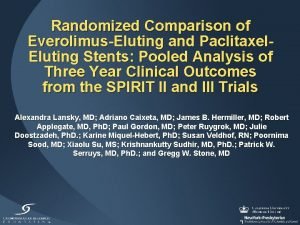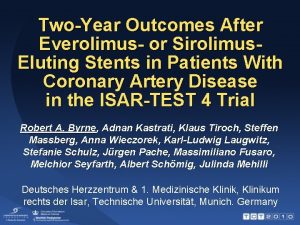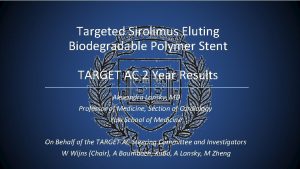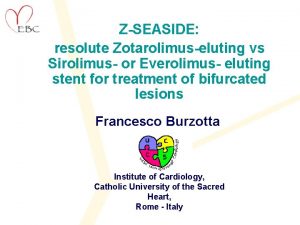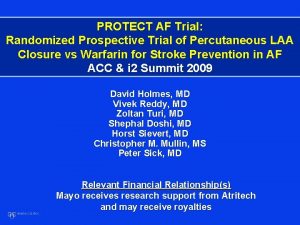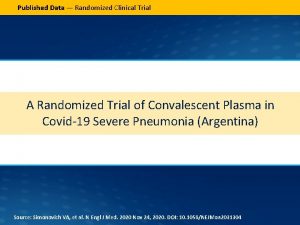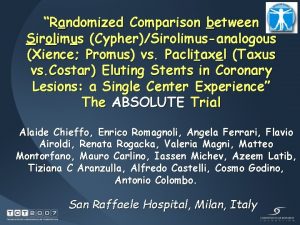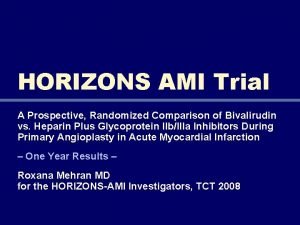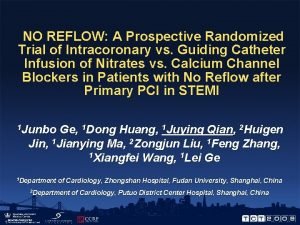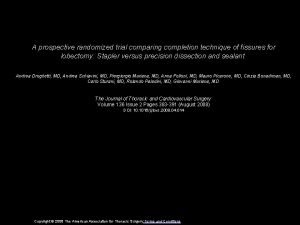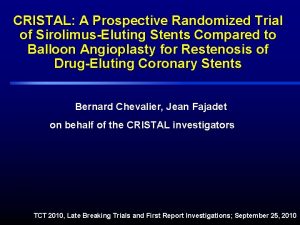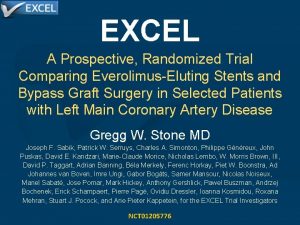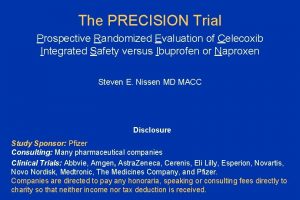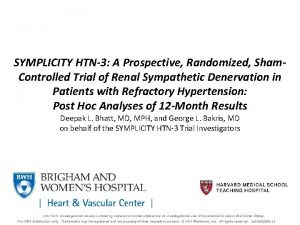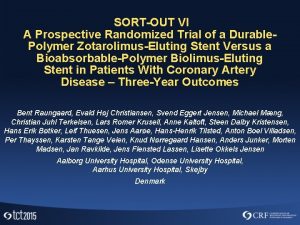Prospective Randomized Trial of Paclitaxel versus Sirolimus Eluting




















- Slides: 20

Prospective, Randomized Trial of Paclitaxel- versus Sirolimus. Eluting Stents for Treatment of Coronary Restenosis in Sirolimus-Eluting Stents Robert A. Byrne, Julinda Mehilli, Klaus Tiroch, Stefanie Schulz, Steffen Massberg, Karl-Ludwig Laugwitz, Albert Schömig, Adnan Kastrati Deutsches Herzzentrum & 1. Medizinische Klinik, Klinikum rechts der Isar, Technische Universität, Munich. Germany ISAR-DESIRE 2

Background • The widespread adoption of DES therapy has led to significant absolute numbers of patients presenting with DES-restenosis • It is estimated that up to 200, 000 cases per annum occur in USA ISAR DESIRE 2

Background • The optimal treatment strategy for instent restenosis is based on the axiom: ¡ maximize ¡ minimize acute gain late loss • In BMS-restenosis this has most effectively been accomplished by DES ISAR-DESIRE JAMA 2005; RIBS-II JACC 2006 TAXUS-V-ISR JAMA 2006; SISR JAMA 2006 ISAR DESIRE 2

Background • In DES-restenosis the most effective management strategy is unclear • While repeat DES implantation seems preferable, optimal stent type is not known ¡ Different DES (“hetero-DES”) ¡ Same DES (“homo-DES”) Lee et al. AJC 2006; Cosgrave et al. AHJ 2007 Garg et al. CCI 2007; Byrne et al. Rev Esp Card 2008 ISAR DESIRE 2

Background • SES have proven superior to PES in subsets of patients with high-risk features • The comparative performance of both stents in SES treatment failure is not known ISAR-DESIRE JAMA 2005; ISAR-DIABETES NEJM 2005 SIRTAX NEJM 2005; ISAR-SMART-3 EHJ 2006; Schömig et al. JACC 2007 ISAR DESIRE 2

Study Objective • To compare the anti-restenotic efficacy of SES (Cypher) versus PES (Taxus) in patients with SES-restenosis ISAR DESIRE 2

Study Organization Design 450 patients enrolled at two centres in Munich, Germany • DESIGN: Randomized, openlabel, active-control trial • INCLUSION CRITERIA: 1. In-SES restenosis > 50% 2. Symptoms/signs of ischaemia • EXCLUSION CRITERIA: 1. Cardiogenic shock 2. Lesion in LMCA or graft 3. Acute myocardial infarction • PRIMARY ENDPOINT: In-stent late loss SES (Cypher) n = 225 PES (Taxus) n = 225 Angiographic follow-up at 6 -8 months (84. 8%) Angiographic follow-up at 6 -8 months (84. 9%) Clinical followup at 12 months ISAR DESIRE 2

Baseline Characteristics Patients SES n = 225 PES n = 225 Age (years) 66. 4 67. 1 Female Diabetes mellitus Clinical presentation 20. 8 38. 2 25. 7 33. 8 Stable 80. 0 83. 3 ACS 20. 0 16. 7 Numbers shown are percentages ISAR DESIRE 2

Baseline Characteristics Lesions SES n = 243 PES n = 240 Vessel size 2. 78±. 47 2. 75±. 48 Lesion length 12. 7± 8. 3 12. 5± 7. 7 Cypher 38. 7 38. 3 ISAR stent 61. 3 61. 7 Initial SES Numbers shown are mean±SD or percentages ISAR DESIRE 2

Baseline Characteristics Lesions – Restenosis Morphology Focal margin Focal body Multifocal Diffuse/proliferative Occlusive SES n = 243 (%) 21. 0 PES n = 240 (%) 18. 8 37. 5 6. 6 30. 0 4. 9 34. 6 7. 5 35. 8 3. 3 ISAR DESIRE 2

30 -Day Results SES n = 225 PES n = 225 0 0. 4 1. 3 0 1. 3 1. 8 0 0 Death Myocardial infarction TLR Death/MI/TLR Stent thrombosis Numbers shown are percentages; P = ns for all comparisons ISAR DESIRE 2

Primary Endpoint Late Luminal Loss mm P = 0. 75 ISAR DESIRE 2

Secondary Endpoint Binary Restenosis % P = 0. 69 ISAR DESIRE 2

Secondary Endpoint TLR 50 40 rate, % P = 0. 52 30 20 SES 16. 6% 10 PES 14. 6% 0 0 2 4 6 ISAR DESIRE 2 8 10 12 months

Safety Endpoint Death, MI or Stent Thrombosis 50 40 rate, % P = 0. 98 30 20 PES 6. 3% 10 SES 6. 1% 0 0 2 4 6 ISAR DESIRE 2 8 10 12 months

Major Adverse Cardiac Events Death, MI or TLR 50 40 rate, % P = 0. 71 30 SES 20. 4% 20 PES 19. 6% 10 0 0 2 4 6 ISAR DESIRE 2 8 10 12 months

Conclusions • Repeat DES implantation for DESrestenosis is safe out to 1 year • In cases of SES-restenosis, both SES and PES are associated with a comparable degree of anti-restenotic efficacy ISAR DESIRE 2

SES (Cypher) Efficacy Late Luminal Loss mm ISAR-DESIRE JAMA 2005; ISAR-DIABETES NEJM 2005 ISAR-SMART-3 EHJ 2006 ISAR DESIRE 2

Conclusions • Drug resistance at an individual patient level may play a contributory role in the somewhat lower anti-restenotic efficacy of SES in this study ISAR DESIRE 2

Thank You ISAR DESIRE 2
 Paclitaxel
Paclitaxel Carboplatino y paclitaxel para que sirve
Carboplatino y paclitaxel para que sirve Sirolimus rapamune
Sirolimus rapamune Jayne reuben
Jayne reuben Sirolimus rapamune
Sirolimus rapamune Advantage of randomized controlled trial
Advantage of randomized controlled trial Types of process validation
Types of process validation Longitudinal design
Longitudinal design Retrospective validation
Retrospective validation Difference between case control and cohort study
Difference between case control and cohort study Retrospective causal-comparative research
Retrospective causal-comparative research Types of longitudinal studies
Types of longitudinal studies Concurrent validation
Concurrent validation Site:slidetodoc.com
Site:slidetodoc.com Sciglass database
Sciglass database Iceberg phenomenon of disease examples
Iceberg phenomenon of disease examples Veille prospective
Veille prospective Retrospective cohort study
Retrospective cohort study Prospective memory psychology definition
Prospective memory psychology definition Institute for prospective technological studies
Institute for prospective technological studies Prospective analysis financial statements
Prospective analysis financial statements
